Goldring doesn’t get enough respect from North American audiophiles and that baffles me somewhat. They are extremely affordable cartridges that track very well and don’t attempt to impart too much of their own sonic signature on the music. The Goldring E4 is the new flagship in the entry-level range and whilst not inexpensive at $300 USD, it certainly won’t break the bank if your turntable is in the $750 to $1,500 range.
The E4 is also $120 more than the E3, which raised my expectations rather significantly.
It also faces some stiff competition from Nagaoka, Ortofon, Grado, and Sumiko which is a good thing; there are so many quality MM phono cartridges right now below $400 USD that vinyl listeners really can’t complain that better sound quality is out of reach .
The resurgence of vinyl has been very kind to cartridge manufacturers; Goldring has done very well over the past decade because it focused on high quality solutions that were actually affordable. Its range of moving magnet and moving coil cartridges including the Eroica HX and award-winning E3 are superb performers and legitimate competitors to anything offered by the aforementioned competition at their respective price points.
I’ve used the older E3 successfully on the NAD C 588 and Thorens TD-160 Super Turntables for the better part of 15 months and have been consistently surprised by its performance.
The Goldring E4 is designed to be compatible with all medium-to-high-mass tonearms of the type found on the majority of budget to midrange turntables. And because it’s constructed using the same high-quality core as the other E Series cartridges in the range, E4 is ideal both for those who wish to upgrade an obsolete cartridge in its entirety or those who want to boost the performance of their existing E Series cartridge by replacing the stylus.
What’s different about the new E4?

The super-elliptical nude diamond stylus features lower effective tip mass, and improved rigidity, which should result in better high frequency detail retrieval than ‘bonded’ elliptical alternatives.
The lightweight and superior stiffness of the hollow aluminum cantilever allows the stylus to trace medium-to-high frequencies with greater accuracy.
Goldring’s Magnetic Duplex Technology allows a more accurate transcription of the stereo groove which results in a more accurate soundstage.
Unlike most affordable designs, E4 allows micro-adjustments to be made during the production process, ensuring each cartridge leaves the Goldring factory with optimized channel balance and crosstalk settings.
New super-elliptical nude diamond stylus
The E4 features a ‘nude’ super-elliptical stylus of just 7.6 x 18 microns (0.3 x 0.7 mil), which is cut and polished from a single homogeneous piece of diamond.
To complement its low tip-mass stylus, the E4 now features a hollow aluminum cantilever tube. The lightweight and superior stiffness of the material allows the stylus to trace medium-to-high frequencies with the intended goal of greater accuracy, while simultaneously reducing distortion and mis-tracking.

My experience so far with the E4 and Eroica HX confirms that both are excellent trackers even on some of the dirtiest or worn records in my collection.
The E4 offers 3.5mV of output which is on the lower side for MM cartridges but it proved to be sufficient with my NAD C 316BEE V2, Pro-Ject Phono Tube Box D2, Cambridge AXA35, and Cambridge Audio Evo 150 Integrated Amplifiers.
The Goldring E4 is likely to be used with entry-level or vintage turntables like the Yamaha YP-701 and NAD C 588 and while I found the removable headshell on the Yamaha to be a better match, the E4 mounted quite easily on the Pro-Ject designed tonearm on the NAD turntable.
Goldring recommends a tracking force of 1.75 grams for the E4 and that proved to be accurate with the C 588 table, but I did have to go to 1.85 on the Yamaha.

Specifications:
- Frequency Range 20 Hz – 20 kHz
- Channel Balance < 1.5 dB @ 1 kHz
- Channel Separation > 20 dB @ 1 kHz
- Sensitivity 3.5 mV (1 kHz @ 5 cm/s)
- Static Compliance 20 mm/N
- Vertical Tracking Angle 20°
- Stylus Radius 7.6 micron (0.3 x 0.7 mil)
- Stylus Type Nude eliptical
- Load Resistance 47 kΩ
- Load Capacitance 100 – 200 pF
- Internal Inductance 400 mH
- Internal Resistance 410 Ω
- Cartridge Mass 6.9 g
- Fixing Centre 12.7 mm (0.5 in)
- Playing Weight 1.5 – 2.5 g (1.75 g recommended)
Sound
Because the E3 is a part of my daily listening routine, it was somewhat easier to compare the two cartridges and discern if the rather significant increase in price is really worth the expenditure.
Listening to Lee Morgan’s The Sidewinder, and Stanley Turrentine’s Hustlin’ made it rather clear that the E4 has the same energy and overall crispness of the E3 but with a few key differences.
I’ve never really felt that the E3 was anything but clear sounding from top to bottom, but the E4 betters it from the perspective that micro detail is easier to discern and top end energy has less of a hardness that some might find distracting.
Horns have a lot of bite through both cartridges, but the E4 is definitely more resolving and even slightly warmer sounding in the upper midrange and lower treble.
Does it lose some of its airiness in the process? I started to wonder that as I went through my recent stack of Blue Note Tone Poet releases including the superb “blue spirits” by Freddie Hubbard recording that just shipped.
Listening through the ATC SCM50A Active Loudspeakers that just arrived, horns filled my relatively small listening space (16′ x 13′ x 9′) with a rather overwhelming sense of presence and color that had me on the edge of my sofa; top end detail through these behemoth loudspeakers is simply outstanding.

The E4 digs out more top end detail from every recording but it doesn’t thrust it down your throat either.
The ATCSCM50A is superior to any loudspeaker I have at home from the perspective of low end impact, definition, and texture; the E4 is similar to its discontinued sibling from the perspective that is favors speed, clarity, and definition over impact and texture.
Calling the bass thin would be an exaggeration, but compared to the Grado Labs Timbre Opus3 — the E4 feels like hot matzo ball soup on Shabbos without the extra carrots and noodles. The bass is certainly hearty but it lacks the Grado’s heavier punch and texture.
Listening to Tool, Metallica, Talking Heads, Rush, and Tangerine Dream, the E4 demonstrated on a consistent basis that it can carve out very precise and defined bass notes but that it benefits from a system that can add some texture when required.
One of the strengths of the Goldring E3 was its clarity and neutrality in the midrange which allowed the rest of the system to impart its own coloration on the sound.
Vocals could be thin sounding depending on the amplifier/loudspeaker combination and I think that remains true with the E4 with the exception of the aforementioned upper midrange and treble which exhibit greater texture and warmth.
Sam Cooke through the E4 and NAD’s phono section and Q Acoustics 3050i Loudspeakers was a good combination because the upper bass/lower midrange of the NAD amplifier has some additional emphasis and the British loudspeakers are darker sounding in the midrange as well.
Running the Goldring E4 through the Cambridge Audio Evo 150 driving the Q Acoustics 5040s might have been my favorite system of them all; the internal MM phono stage of the Evo 150 is above average but exactly what the E4 needed with the thinner sounding loudspeakers.
The 5040 have a very open and refined sounding treble that blends well with the midrange that is incredibly transparent (albeit somewhat thin sounding); the Evo 150 has a surprising degree of midrange warmth, clarity, and resolution that really takes these loudspeakers across the finish line.
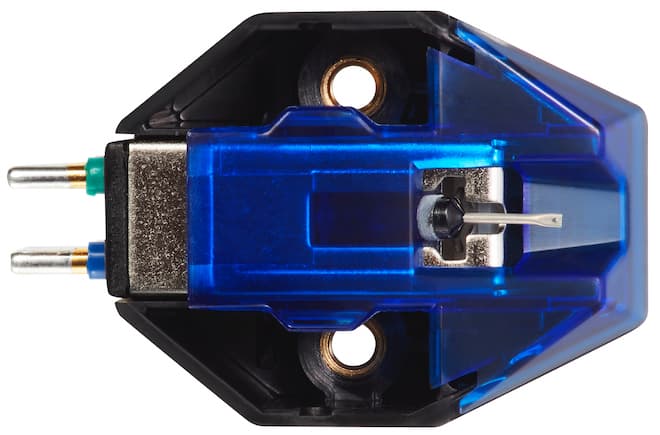
Conclusion
With so much competition below $300, the Goldring E4 had to eclipse the performance of the previous generation E3 to remain competitive but also deliver something that the competition does not.
There is no question that the E4 offers a higher level of resolution and refinement than that of its predecessor and superior top end detail retrieval that never becomes strident.
The tonal balance is similar but there is some additional presence in the upper midrange that makes this a more engaging listen.
The Grado Timbre Opus3 delivers greater impact in the bass range and certainly a wider color palette across the board; it remains one of my favorite phono cartridges currently available with a wide range of phono pre-amplifiers.
The Goldring E4 delivers a more open and neutral sounding presentation with a wider soundstage. It is also easier to sculpt into a very specific type of sound which will appeal to those who use vintage receivers or amplifiers, or entry-level integrated amplifiers below $1,000 than often veer to the darker side.
Combine all of that with excellent speed, timing, and resolution and you have one of the best sounding entry-level phono cartridges available below $300.
For more information: goldring.co.uk/goldring-e4.html
Coming soon to www.goldringusa.com
Related Reading:





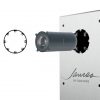








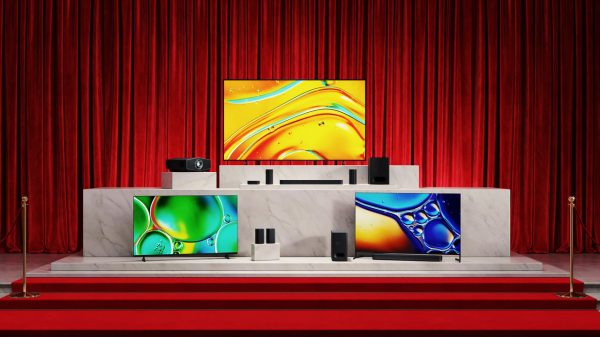





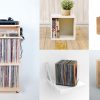

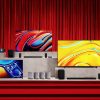

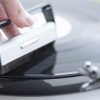

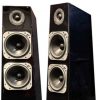













Laferte Jean Francois
September 12, 2023 at 11:52 am
Hi,
Having the ATVM540ML for two years on my Denon DP300F and quite happy with it,I wonder if I would hear the difference if I switch to the E4?
Your article teases me but I wonder..
Thx for clearing up.
Jean-François Laferté
Terrebonne,Québec,Canada
Ian White
September 12, 2023 at 2:52 pm
Jean Francois,
Really depends on the rest of the system. What do you like about the AT cartridge?
Best,
Ian
Laferte Jean Francois
September 13, 2023 at 2:33 pm
Ian,
Thx for the quick reply.I have a BC Acoustique EX-214(2x45w,8ohms) and a pair of Monitor Audio Bronze 50 bookshelves speakers.
What I like about the AT:openness,balance with treble and bass,clear sound not muffled,spacy.
I listen to a lot of jazz and classical music.Some very well,engineered lp like “Aja” by Steely Dan..
Jean-François
Ian White
September 13, 2023 at 3:32 pm
Jean Francois,
Would definitely be a lateral move then. The E4 might offer more resolution and color but everything else would be rather similar.
Best,
Ian White
Laferte Jean Francois
September 14, 2023 at 7:47 pm
Ian,
So,in conclusion it’s a 50-50 split:similar at some point but with more resolution and color with the E4..
I’ll think about it..
JF
Ian White
September 14, 2023 at 7:57 pm
Jean-Francois,
It definitely works better in my dining room system with the Q Acoustics 3050i and the NAD C 316BEE V2 than the Ortofon 2M Red. Speakers that require some additional energy in the treble do well with the Goldring carts in the range. More analytical sounding systems do not.
Best,
Ian